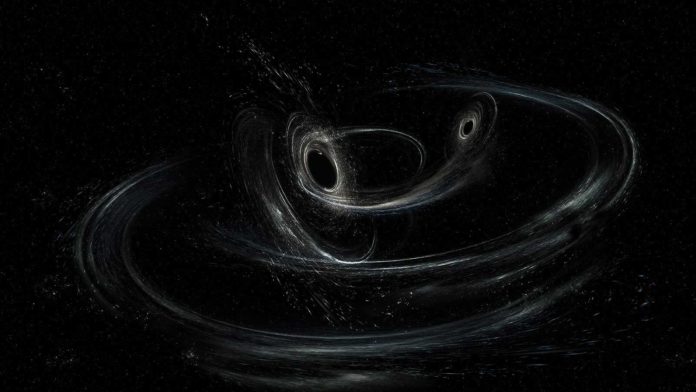Gravitational waves are ‘ripples’ in space-time caused by some of the most violent and energetic processes in the Universe. Transient in nature, some scientists have had predicted that the passing gravitational waves could be leaving persistent traces in detectors.
What’s more, Ligo and Virgo observatories have also upgraded their sensitivity to create a renewed interest in these predicted effects. Although gravitational waves are tricky to detect, we have managed to so in recent years. But now, scientists have improved the mathematical framework used for describing so-called persistent gravitational-wave observables and calculated that these waves may leave more persistent traces of their passing.
The framework developed by Éanna Flanagan of Cornell University, New York, and colleagues connect conceivably quantifiable effects to the ebb and flow of spacetime by black holes collisions. Gravitational waves contort the shape of spacetime, changing the relative positions, velocities, accelerations, and trajectories of physical objects in their ways. Those objects don’t come back to their unique configurations after the waves pass, making a “diligent” impact that researchers could possibly quantify.
One example of a measurable persistent change is the predicted shift in the relative positions of LIGO’s mirrors. The team’s framework accounts for the previously predicted persistent observables—including the LIGO mirror example—in a single mathematical formulation, and it also predicts three new ones. These new effects include shifts in time measurements by clocks at different locations and changes in the rotation rate of a spinning particle.
The small number of black hole collisions so far detected by LIGO and Virgo is insufficient to provide the cumulative data needed to spot persistent gravitational-wave observables. But the increased detection rate expected from the upgraded detectors could change that situation. The detection of the three newly identified observables, however, will require new types of observatories.
This research is published in Physical Review D.
